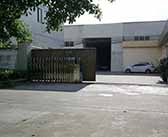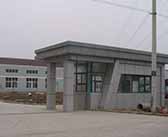
Spring Manufacturing Process

The spring manufacturing process starts with you, the customer. Once a Request for Quote (RFQ) is received, along with a print or sample, we promptly work to provide a quote back to you the same day, within a few hours in most cases. RFQs are first checked to see if we can provide a part straight from our Stock Catalog. Upon submitting a quote, we would point out any deviation at this point, examples being wire size or finish. We may also make any design recommendations, to ensure a reliable spring, as well. Once you submit a PO, the CAD drawing and Specs are reviewed to ensure a good design. All required tolerances, such as zinc plating are listed for manufacturing and then any POs for outside processing are written up.
The order is then entered into our computer, an acknowledgement is generated back to the customer, the internal order is then posted to stock raw material, we place an order for material if needed. If material is available the order is sent to the shop to either go to the coiling, handwork, or secondary department.
Coiling:
This is the area where the automatic CNC coiling machinery operates. Automatic coilers can handle wire from .008" to .625".Hand Work:This is where small quantities of springs are made by hand. If a customer wants less than 15 springs, the job is given to the Hand Work department, since the setup time is minimal, the springs can be produced more economically.
Secondary:Torsion Spring Manufacturing
The secondary department is where small quantities of wire are bent by hand. Once the spring is coiled, this is where the ends of torsion springs are formed, where loops are put onto the ends of extension springs, and where wire forms are made.
Grinding: Compression Spring Manufacturing
This is the department where the ends of compression springs are ground. A lot of the work is done with automatic machines, which pass the springs between two large grinding wheels so that both sides of the spring can be ground at once.




